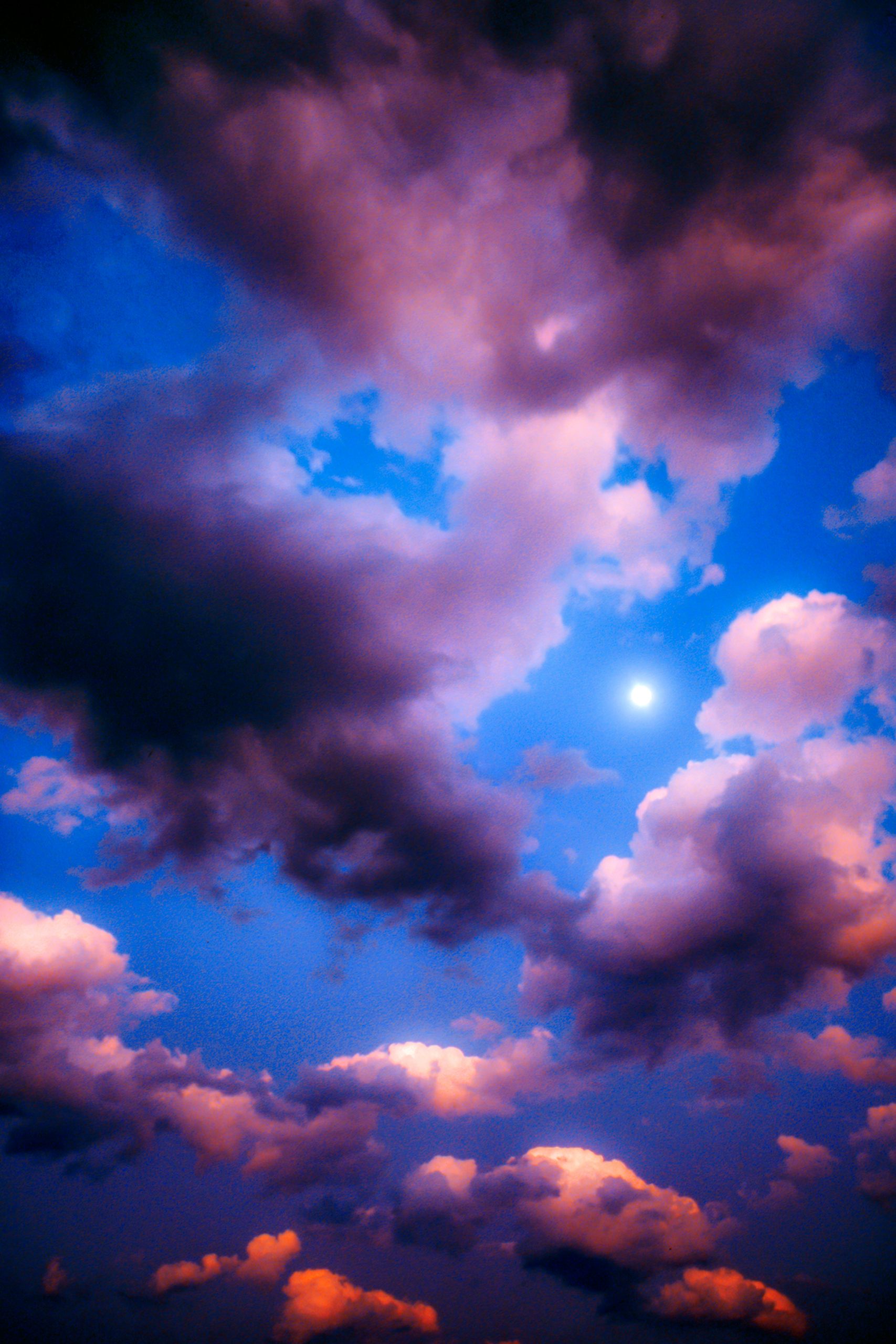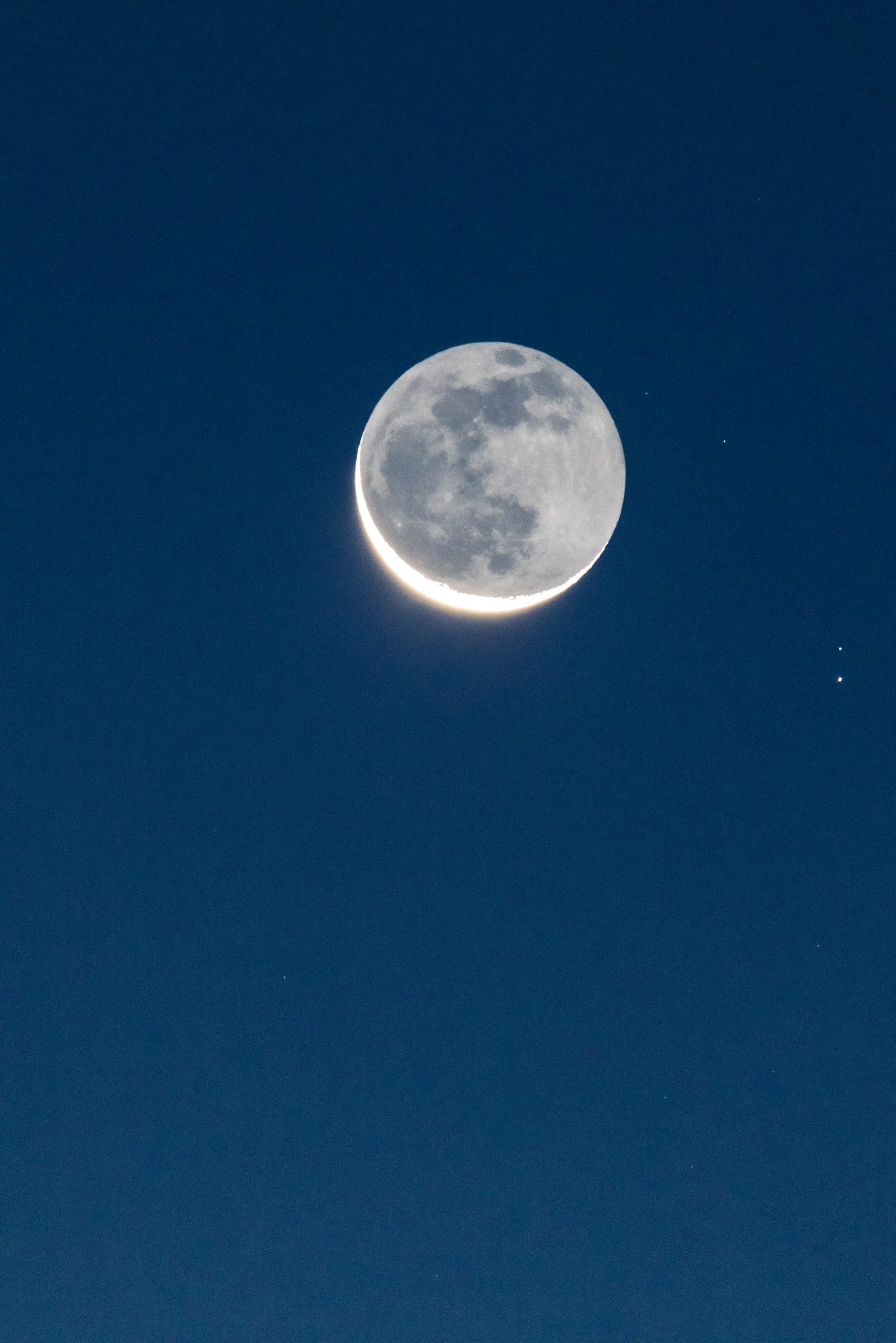
The last waning crescent moon is lit 11 percent by the sun, with the remaining moon illuminated by Earth’s reflected light.
I was fortunate to be in my teen years during the 1960s. It was both fascinating and chilling to observe the space race between the United States and the Soviet Union. On July 20, 1969, years of scientific efforts were celebrated as the world watched the first man walk on an extraterrestrial body within our solar system.
I joined my family in our house den at 1:30 in the morning to watch the event unfold on our new Quasar color television. We waited and watched several minutes as the screen beamed a gray and white scene of the lunar lander ladder.
Then, Neal Armstrong’s spacesuit boot appeared, as he climbed down the ladder. Waiting at the bottom of the ladder Armstrong hesitated and with both feet jumped onto the surface of the moon. Armstrong then spoke words we cannot forget: “That’s one small step for man, one giant leap for mankind.” More than 650 million people around the world watched this once-in-a-lifetime event and celebrated — not for a country but for the accomplishment of the human race. By 1972, NASA sent five manned Apollo missions to the moon before stopping due to budget restraints. While my initial career plans to be a scientist never came to fruition, the excitement of seeing and experiencing the moon stays with me today.

Our moon is the largest and, second to the sun, the brightest celestial body we view in space, so it’s natural for it to garner our attention. Earth’s moon is our planet’s only natural satellite, orbiting at a distance of 238,900 miles. It takes 29.3 days for the moon to orbit the Earth, known as a lunar month. The moon’s size is one-fourth the diameter of the Earth, similar to the size of Australia. Our moon is the largest satellite in relation to its planet and fifth largest overall in our solar system.
The prevailing theory on the moon’s origin involves Earth. In the early history of our solar system, impacts of celestial bodies were common. Several billion years ago, an object the size of Mars collided with Earth, resulting in collision debris that eventually formed a moon. When we view this moon today, we see impact craters, mountains, and darker plains covering its dusty surface. The darker areas are magma lava beds, formed by volcanic activity, and magma displaced by impact collisions on the far side of the moon, which we never see illuminated. Scientists believe the moon once contained an atmosphere destroyed by solar winds, and ice crystals found in deep impact craters are evidence that the moon contained water at one time. The full moons of the year are named after animals, seasons, and the planting and harvesting of crops.

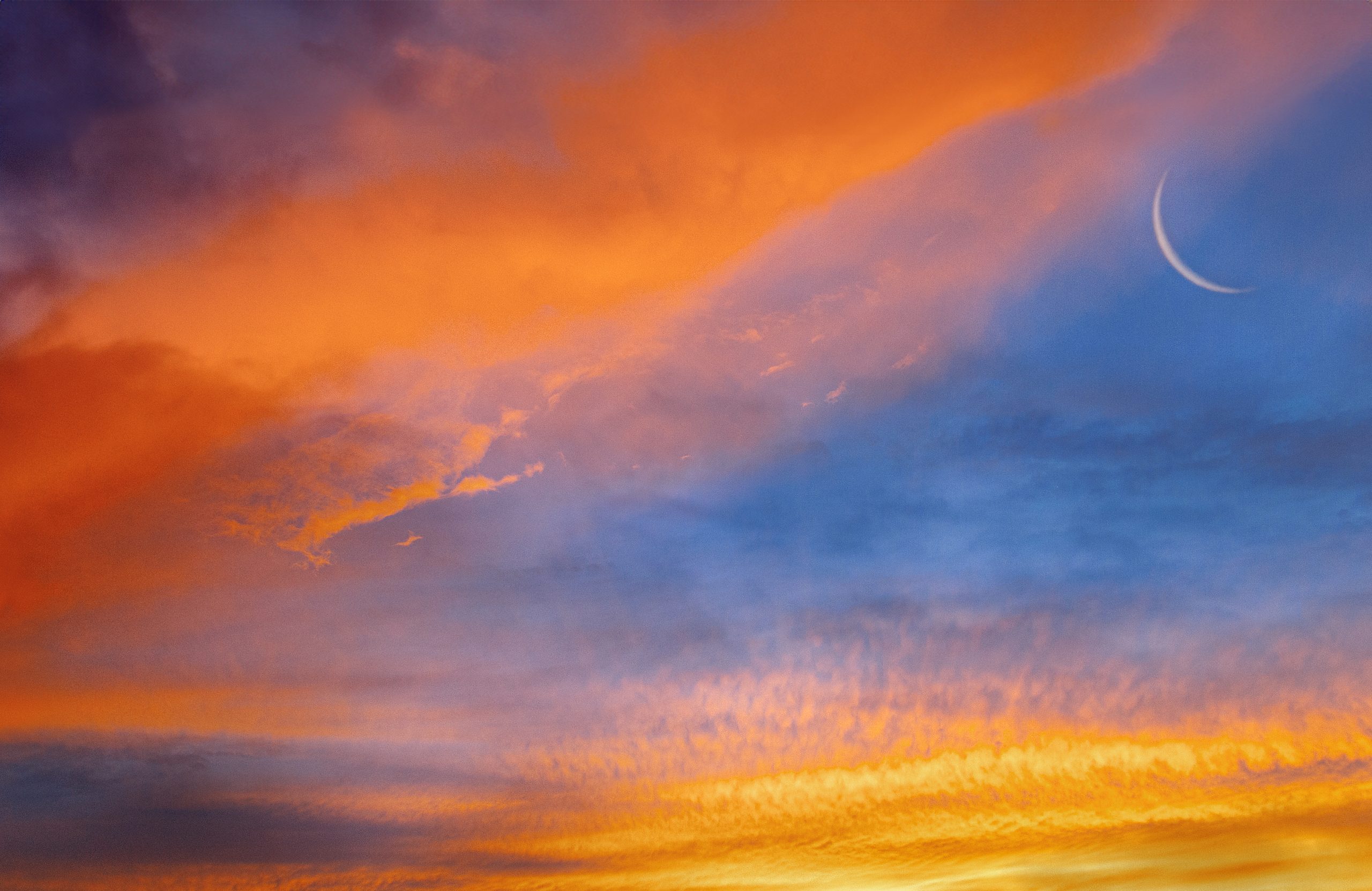
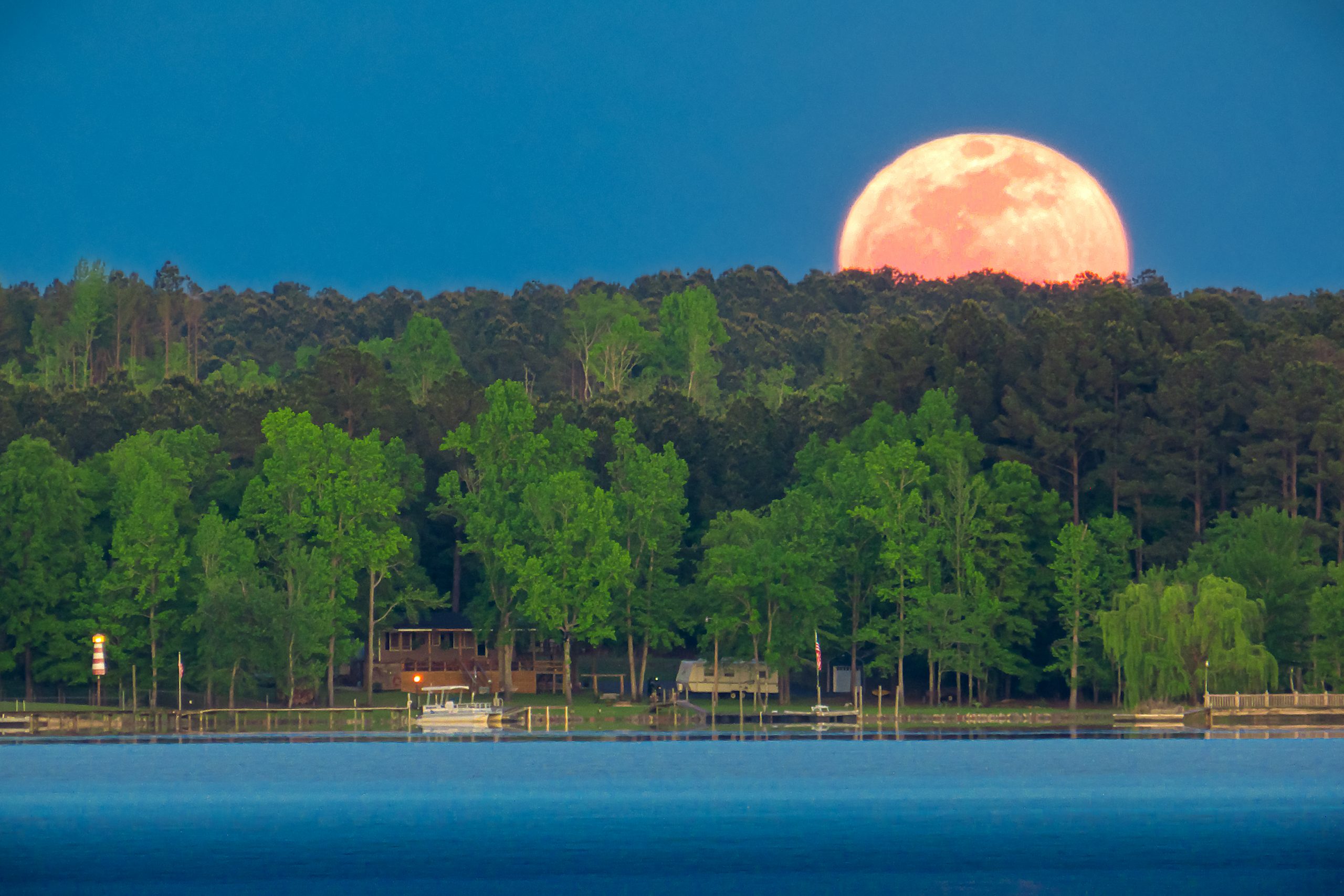
We describe the moon by its phases, all of which represent the amount of the moon surface we see illuminated by the sun based on our position relative to theirs. Lunar phases progress from new moon to waxing crescent moon, first-quarter moon, waxing gibbous moon — more than half lit — and finally full moon. A waning moon similarly passes in reverse back through the phases of gibbous, third-quarter, and crescent, returning to new moon. We see the full moon totally illuminated by being directly opposite of the setting sun. A new moon results when the moon is, from our perspective, somewhat in line with the sun and invisible to our eyes. However, only in a solar eclipse is the moon directly in front of the sun.
The full moon especially is of interest when studying the physiological effects on our behaviors. Numerous studies over the years show no outstanding correlations to a full moon on our behavior. Aristotle believed the gravity of the moon affected the water content of our brain, resulting in a behavioral change, but the gravity of the moon cannot affect such a small amount of fluid. Studies have proven we lose sleep during full moon periods, and due to increased light levels, our bodies produce less melatonin. However, we cannot deny the moon affects our emotions. We fall in love under the moon, compose songs about moonlight, and enjoy seeing the moon in the night skies.
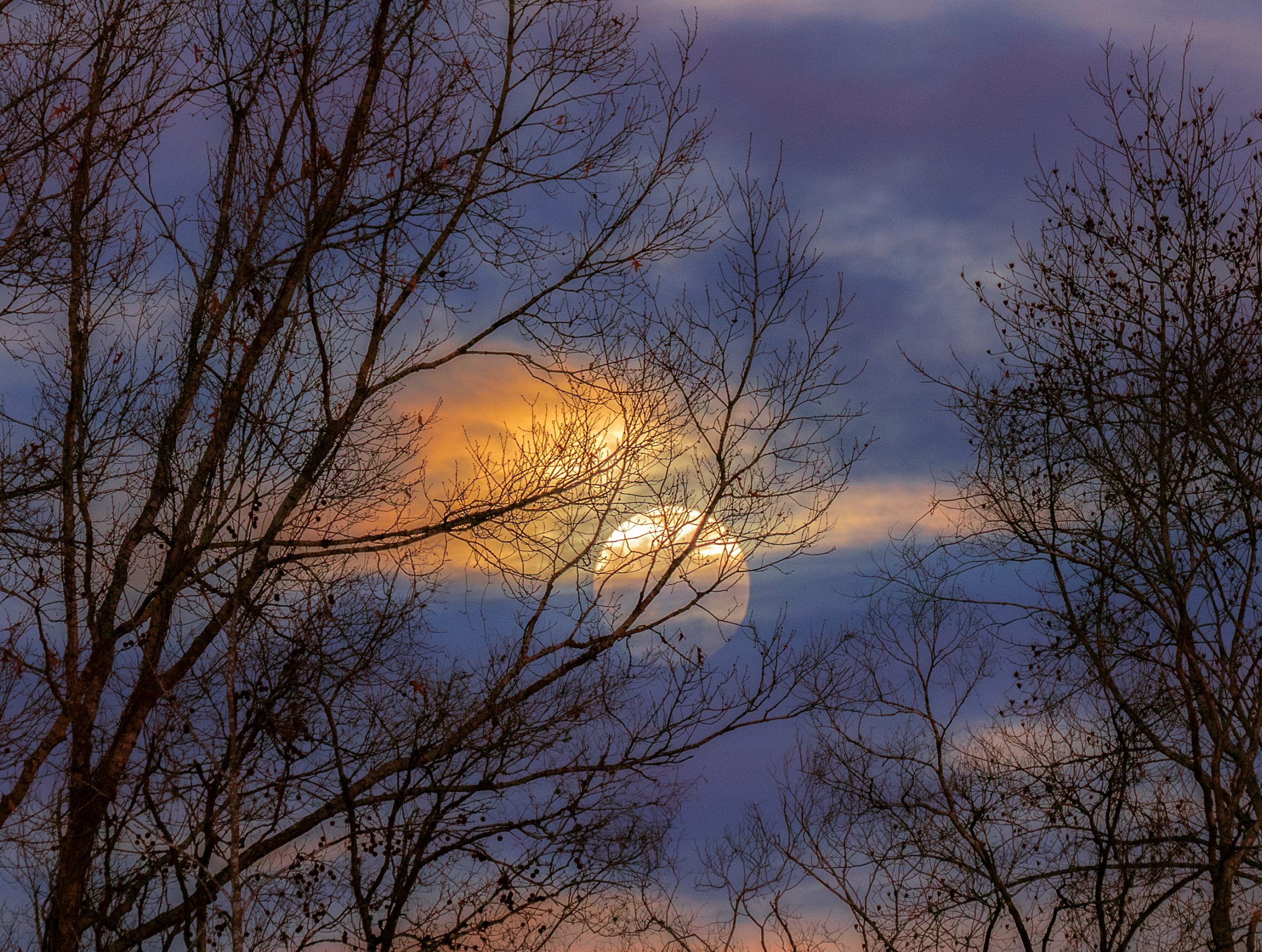
South Carolina’s Lowcountry contains more marshlands than any state along the southeast coast. Having a gravitational pull one-sixth to the Earth, the moon still has a great influence on our environment and lifestyles there. Tides are the rise and fall of sea levels caused by the gravitational pull of the moon, sun, and rotation of Earth. South Carolina experiences two high tides and two low tides within a 24-hour day. Extreme high tides, or “spring tides,” are the result of the sun, moon, and Earth’s gravitational pull in straight alignment. Extreme low tides, or “neap tides,” are the result of the moon facing Earth at a right angle to the sun, canceling out each body’s gravitational pull.
I often am asked to identify the most beautiful scene I have ever witnessed in my 50 years as a photographer. I explain the most beautiful sight in my life involves a full moon in Wyoming. I was camping and canoeing a 16-mile route along the North Platte River with my friend Martin, a fellow employee at the S.C. Wildlife Department. The first night, a full moon allowed us to canoe in the dark, but beavers in the river didn’t like our presence and slapped their tails to splash our canoe. We decided to set up camp on a turn in the river canyon. Setting our tents in a full moon was easy, and we enjoyed a small campfire before retiring for the night. I awoke around 2:30 in the morning from Martin’s snores, and the full moon made our tent a bright environment. I decided to go outside the tent and view the scene since I was wide awake.
Outside the tent was a world beyond belief — brilliant stars, despite the moon, illuminated the entirety of the night sky. The sandstone canyon walls lit with moonlight towered overhead, and reflected moonlight transformed river waters to flowing silver. Shivering in the cold, I was mesmerized by the river of brilliant silver flowing between the walls of the canyon. I wanted to get my camera to record the scene but decided that getting the tripod and camera out of the tent would awaken Martin. Nature provided me a once-in-a-lifetime moment that turned my perception of Earth to a world I never imagined, and it involved our moon.
Maybe in the future I’ll see a scene that tops this memory, and I bet the moon will once again shine its magic.
